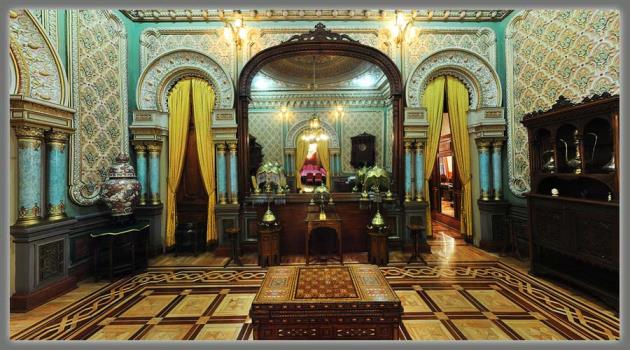DayThursday |
Hour18:00 |
The National Palace in Mexico City, or Palacio National in Spanish, has been the official seat of the Mexican government ever since the Aztec empire was in power from 1325 to the year 1521. The site is located along the entire eastern edge of the central plaza of the city, which is commonly referred to as the Plaza de la Constitucion or Mexico City Zocalo. In addition to being the seat of the federal government, the National Palace Mexico City also houses the Federal Treasury, the National Archives, and the president’s offices. The Palace in Mexico City also functions somewhat as a museum. Visitors can view original paintings by the Mexican artist Diego Rivera as well as displays with government artifacts. Visiting the National Palace is one of the many interesting things to do on a Mexico City day trip. A tour of the Palacio National will reveal a seemingly endless number of courtyards, elaborate stairways, and carved-brass balconies. By touring various sections of the palace, it is interesting to note the changes that have occurred throughout the building in the last 300 years. The most recent addition to the Palace in Mexico City was in the late 1920s when the top floor was added. The history of Palacio National has seen its share of ups and downs. The Palacio National’s northern Mariana door, which is named after the mid-nineteenth-century President Mariano Arista, once opened up to several prisons, courtrooms, and torture chambers. It now contains the offices of the treasury as well as the Finance of Ministry. Perhaps the most notable feature is the main balcony that faces the Zocalo. This is place where the Grito de Delores, commonly referred to as the Mexican Independence Ceremony, is celebrated. The ceremony, celebrated each September 15 at 11:00 p.m., involves ringing the bell that was originally sounded as a call for rebellion against Spain. Although most sections of the building have been remodeled through the years, the murals of twentieth-century artist Diego Rivera remain in their original states. The murals were painted over a period of 25 years and depict various scenes from the history of Mexico. One of the most detailed pieces of the collection is a mural that depicts Mexican history from 1521 to 1930. The mural, which fills an entire wall, has images that are important to Mexico's past such as an eagle, a Mexican flag, and important leaders. If you like the work of Diego Rivera, you may want to take a visit to the nearby Frida Kahlo Museum. Frida Kahlo was another well-known Mexican painter and was the wife of Diego Rivera. A trip to the National Palace Mexico City is an excellent way for adults and children to learn about the history and governmental structure of Mexico. Whether you spend an hour or a day touring the palace in Mexico, you’ll learn about the challenges and changes that Mexico has encountered through the years.  For more information please visit: http://www.palacionacionalmexico.com/ |









